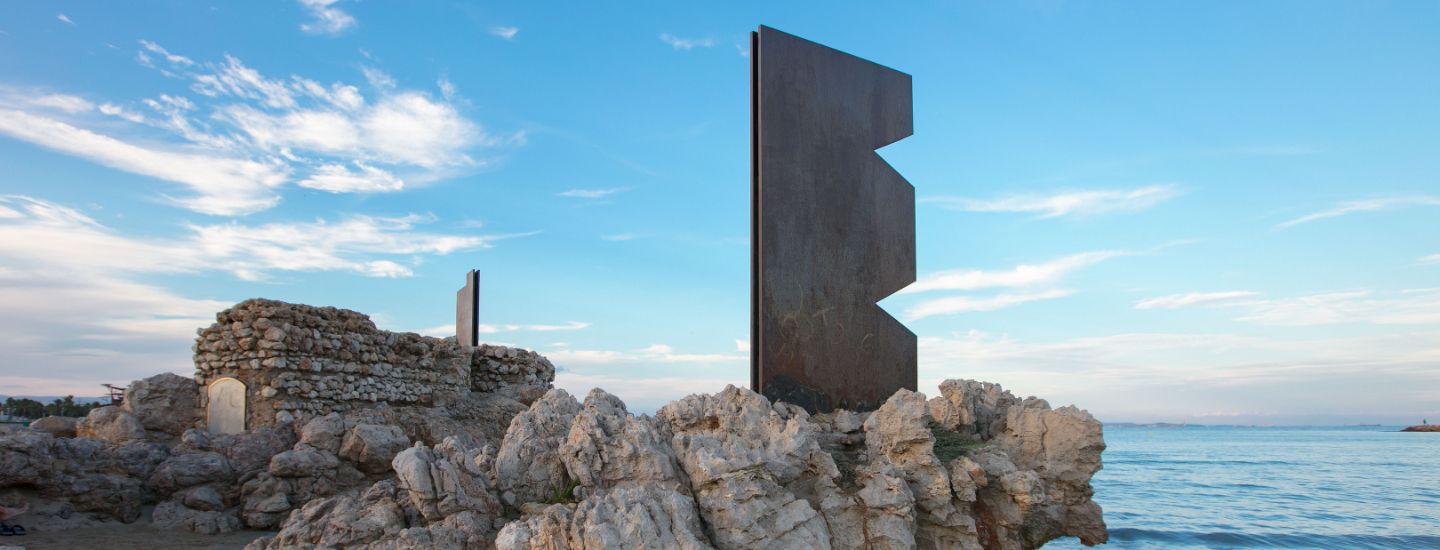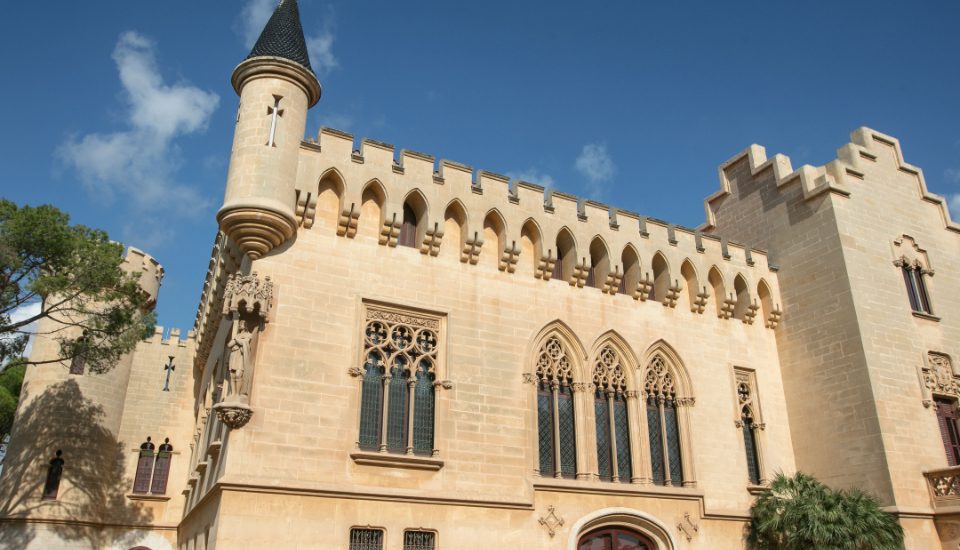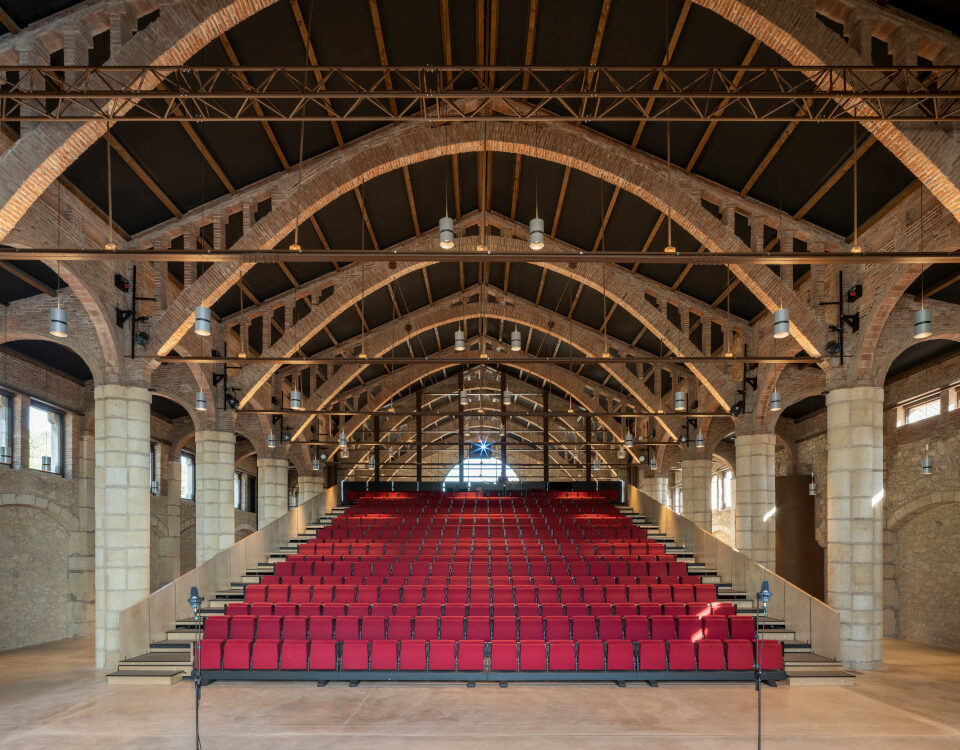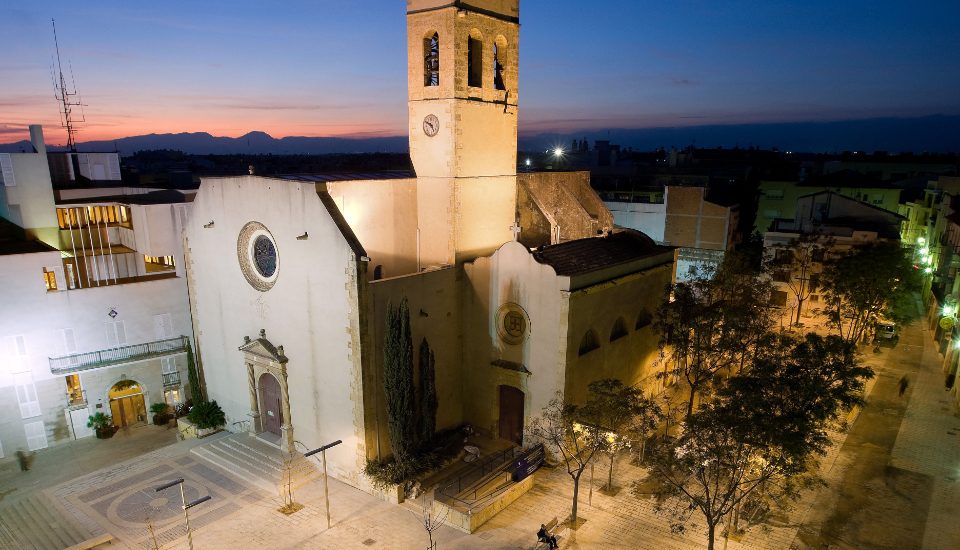Now many long centuries in the past, Vila-seca had several defence or watchtowers that circled the city to protect it from possible attacks. Many of these towers have been preserved today as heritage in the historic town centre.
The defence towers are included on the route to get to know the historic centre via the monuments with a QR code.
And outside the centre, within the municipality and the surrounding area, you can still see the remains of other watchtowers. These include the towers of Carboners, Mas d’en Ramon, Virgili, ca Poblet and ca Cervelló.
Torre de la Tuies del Café
Torre de la Tuies del Café (Cafe Thuja Trees Tower) (16th century) is on Sant Antoni Street, outside the wall on its western side. Today the tower has been incorporated into housing, but you can get a glimpse of the full height of its southern side through the opening onto Abat Aureli Escarré Street.
The tower has a square base measuring 4.4 metres per side and the walls are 50 centimetres thick. A machicolation has been conserved on one of the sides, simply meaning an opening through which stones or burning oil or water could be dropped on enemies during attacks.
Torre de l’Abadia
The Abbey tower is the only one that is enclosed within the enclosure that forms the irregular rectangle of the first fence of Vila-seca, unlike the other two, in such a way that the walls have been joined to the houses that surround it.
With a square floor plan, it consists of a ground floor and three storeys and an upper terrace finished with battlements which, in a recent restoration, have been raised one metre above their original level, so that the height that can be seen today has nothing to do with the original height.
Chronologically, it can be dated to the end of the 12th century. It was restored in 1600, when Pere Gebelí was the rector of Vila-seca, as can be seen on the Latin engraved ashlar on the façade of Carrer Major, the transcription of which reads: “By God in his utmost goodness and by Mary ever virgin and by the Holy Protomartir Esteve, he arranged this workshop, existing until now as rector Pere Gebellí in 1600 since the birth of the virgin”. This was the moment when the abbey was enlarged and the construction of the new church began.
Torre de l’Ardiaca
Torre de l’Ardiaca (Archdeacon Tower) was discovered during the restoration works on the apse of the medieval church. After examining the marks made by the stonemasons and the nearly imperceptible remains of a Gothic geminate window, they determined it was built around the first half of the fourteenth century. Its inside is the church sacristy.
There are speculations that this tower, due to its large size (a base of over 50m2), was the main watchtower of the former Vila-seca del Comú, annexed to the long-gone medieval church, which would have been part of the castle fort that the religious lord of the town had ordered built.
Torre del Delme
Torre del Delme (Tithe Tower) also known as Guardiola (Moneybox), is on narrow Riudoms Street, in the Cal Delme building. It was one of the buildings belonging to the Casa Delmària de l’Ardiaca (Abbey Tithe House)—on the same street—inside the first walled perimeter of Vila-seca. As the name suggests, this is where the townspeople went to pay the one-tenth of their earnings as a tax for the church and clergy.
The present-day tower was built in the sixteenth century, although its structure is much older, from the twelfth century. Along with three other towers, this ancient part of the town, now some 800 years old, was the start of an enclosure protected by the nascent population. The magnificent windows with decorative mouldings, quite out of character for the Middle Ages, are openings created in the sixteenth century to improve habitability conditions, more suitable for the period.
The building can be accessed via the Plaça de Voltes. Its base measures 5.6 by 5.2 metres and its walls are 60 centimetres thick. This tower is the one whose original appearance has been most conserved.






